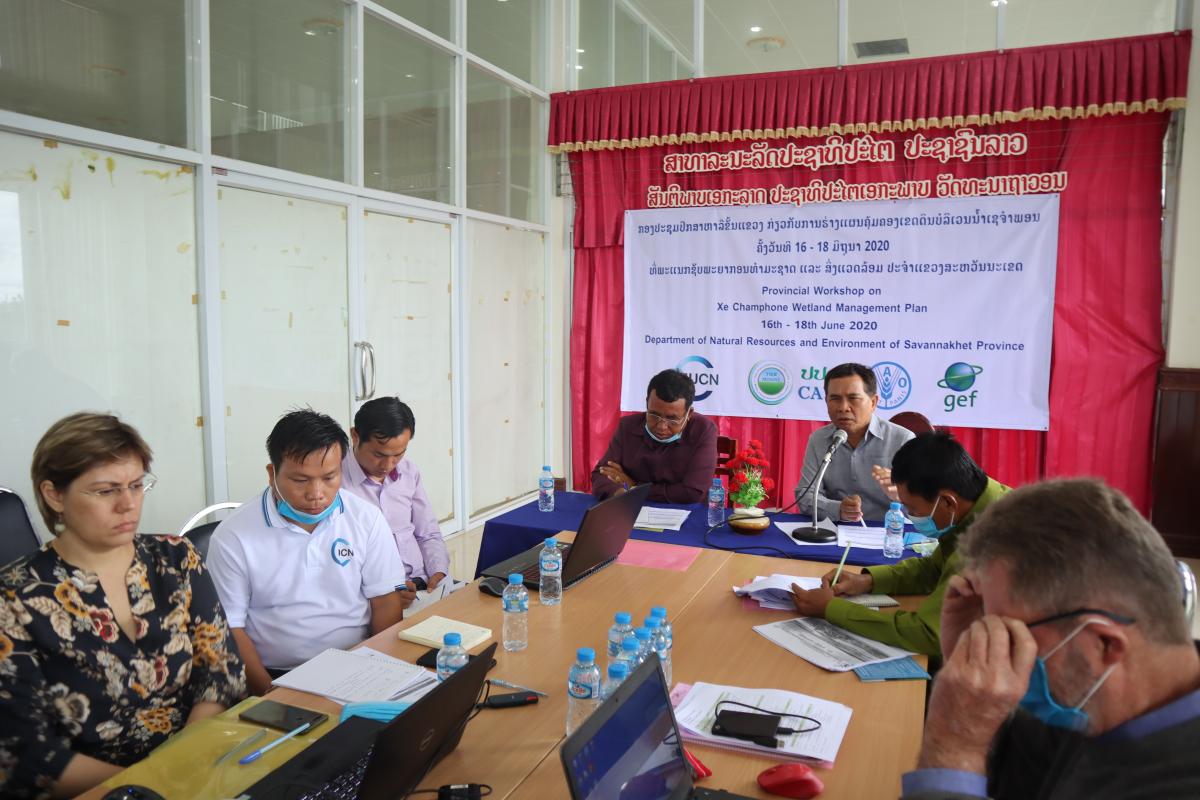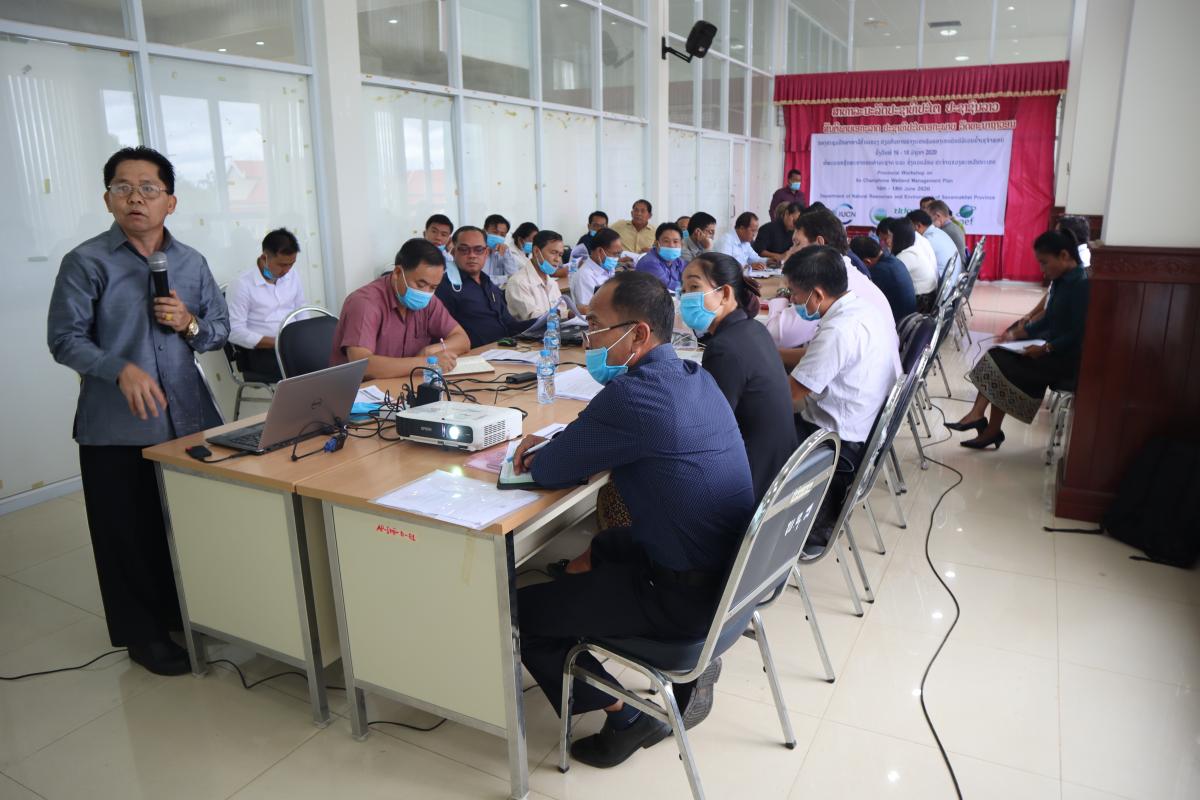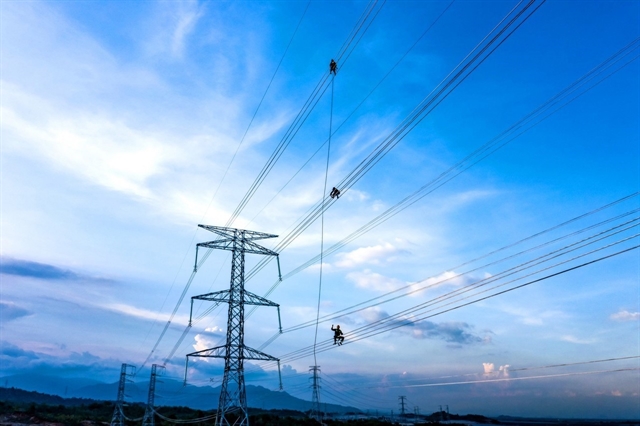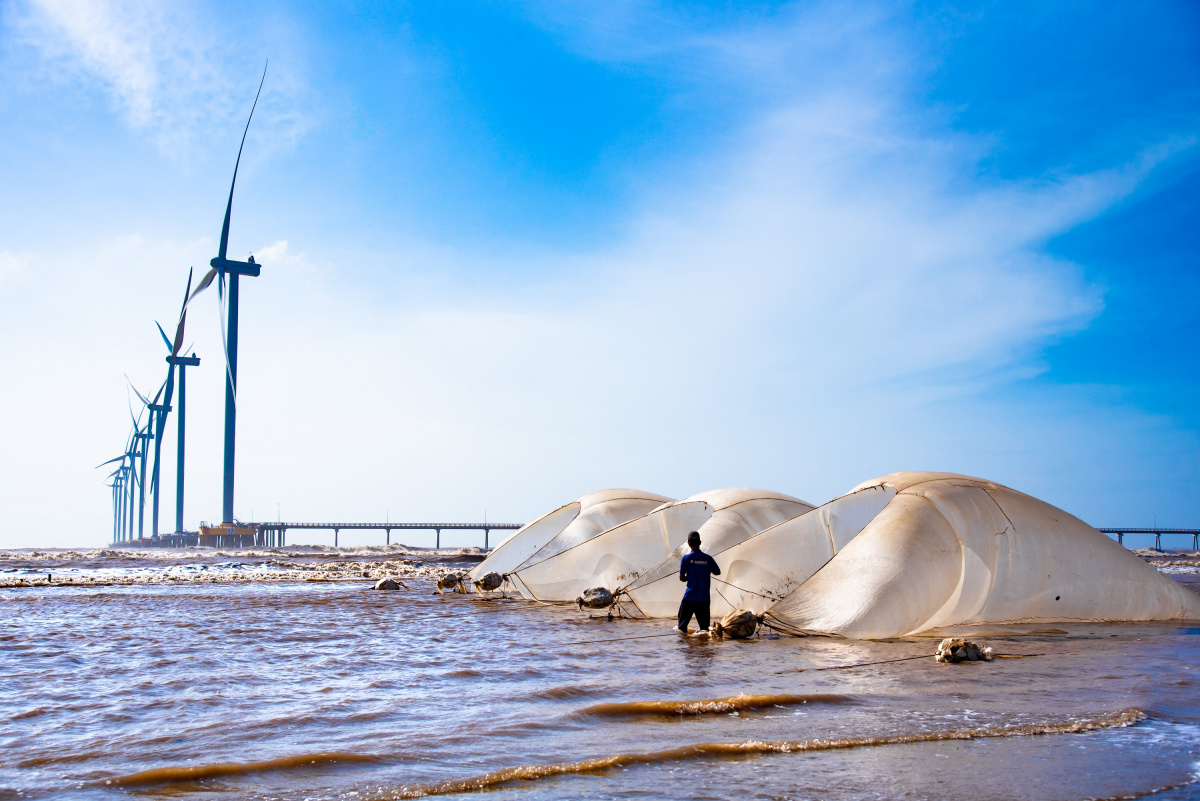IUCN Lao PDR launches stakeholder consultations for the development of the first management plan for Xe Champhone Ramsar site
From 16 to 17 June 2020, IUCN Lao PDR initiated provincial stakeholder consultations to develop the first management plan for the Xe Champhone Ramsar site located in Savannakhet Province. The wetland was designated as a Ramsar site back in 2010, however it never had holistic management plan that would integrate site’s management activities from the district, provincial and national agencies to ensure effective site management and compliance with international policies.
The workshop brought together stakeholders from provincial and district government agencies and various organizations such as FAO, IUCN, WCS and UNDP that are operating on the site to agree on the major wetland’s issues and management interventions to address them over the next five years.
“The Xe Champone Ramsar wetland, while harbouring one of the largest populations of Critically Endangered Siamese Crocodiles in Laos, faces many challenges including habitat degradation due to agriculture, uncontrolled flooding resulting from climate change, overharvesting of natural resources and invasive species expansion among many others. It is critical to initiate multi-stakeholder dialogue to secure wetland's integrity and wise use of its resources in the future.” Said Dr. Natalia Pervushina, Acting Head, IUCN Lao PDR
According to the IUCN Climate Change Vulnerability Assessment of 2018, the Savannakhet region is projected to see an increase in mean annual temperature of 1.7°C by 2050 and average annual rainfall is projected to increase by approximately 21%. This is an alarming statistic considering Xe Champhone is subject to regular flooding of varying intensities, as seen in September 2019 when the site was inundated with extreme rainfall. As such, a robust and functional management plan needs implementing in order to curb the posed threats while integrating the work of multiple stakeholders and the needs of local communities.
Apart from external threats, the site is posed with internal management challenges, such as the absence of established site boundaries and unclear site regulation. This resulted in weak law enforcement by the local agencies and very little consideration of the wetland’s core zones by the local communities, as presented by the Champhone district representatives from DAFO and DoNRE.
“Population expansion has resulted in the degradation of forests in the area, along with increased prevalence of agricultural land. As policy is not currently operating as it should be, these add increased environmental pressures to the site that is already vulnerable to the impacts of climate change” said Mr. Thongsa, DoNRE.
The workshop group discussions covered other issues, including the lack of insight and coordination from the management level, ongoing cultural depletion among local communities and a clear need for alternative livelihood solutions. These defined outcomes were converted into clear management objectives on how best to conserve the site and work collaboratively in the future. The objectives will be included into the Xe Champhone Ramsar site management plan 2021-2025, along with an agreement on distribution of roles and responsibilities. The next step is to finalise the management plan for the next five years, and to work closely with relevant stakeholders to bring about positive, lasting change.
Present workshop is one of the IUCN Lao PDR initiatives in Xe Champhone supported by the FAO Lao PDR project on “Climate change Adaptation in Wetlands Areas in Lao PDR” (CAWA). The project helps local communities in two important wetland areas of Lao PDR adapt to the impacts of climate change, and contribute to the sustainability of their livelihoods, by supporting the restoration and sustainable management of the globally important Ramsar-designated wetlands on which they depend.
A summary video from the event can be viewed on the following link:
https://www.youtube.com/watch?v=T9f8yp7uVG8
Read more about the CAWA initiative here:
https://www.iucn.org/asia/countries/lao-pdr/climate-adaptation-wetlands-areas





